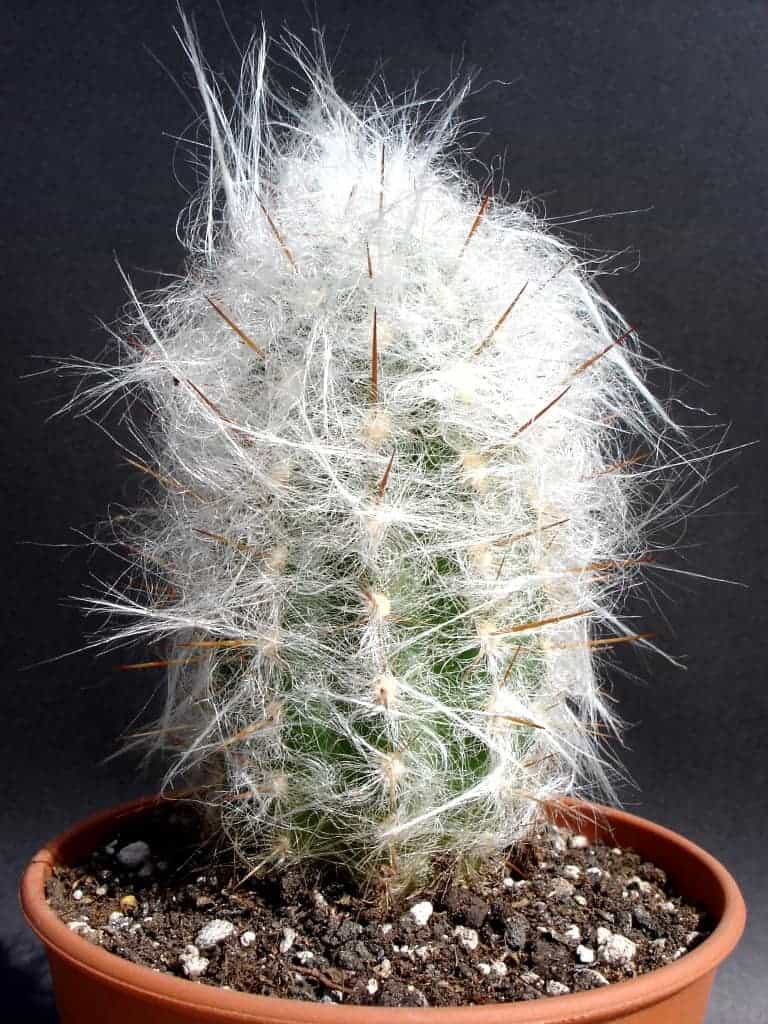The Cephalocereus senilis “Old Man Cactus” In the center and South America, this curious plant will be well known.
On the other side of the Atlantic it may be known for indoor cultivation but little else.
It has nothing to do with any other indoor plant you can imagine.
His name says it all, both the common name and the scientist: Head of old. Let’s look a little at its characteristics.
Originally from Mexico, this cactus is one that attracts attention.
Neither its flowers nor its shape is anything from the other world.
Also inside we will not see it bloom, so what is attractive ?. Seeing the name and the photo, we all have it clear.
His hair! If you ever hear someone who says he has to go home to comb his cactus, you will know that it will be a Cephalocereus senilis.
It is a very long-lived species that can live for a couple of centuries but let’s not get carried away by analogies with humans.
The gray hairs are characteristic from the first moment and that is, what makes it different.
Flowering usually occurs outdoors when the specimens reach a few meters (long-lived specimens.
Indoors it is impossible or almost impossible. If someone gets it, it will be worthy of recognition.
Although it has hair, it is still a cactus, and as such, it has yellow spines that are born just before the hair.
They are just behind and as padded and soft as it seems at first glance, it is not convenient to throw your hand to caress it if you do not want to go out with a few painful punctures.
You may like Aristaloe Aristata
Tips to take care of the Cephalocereus senilis “Old Man Cactus”
Temperature and sun exposure
Specimens grown outdoors with a certain age and size are able to withstand almost 0 ° C. If it is grown indoors, I don’t think it will reach that temperature because then you have a serious problem with the heating.
Even so, its ideal temperature does not meet very high temperatures as one would expect in a cactus. the optimum is around 15 ° C. In any case, the temperatures of a house 20ºC are not an excessive problem.
In winter you should rest in the coolest part of the house and completely dry.
Sun exposure is an essential requirement. You need full sun, even direct.
The hairs that are so characteristic are those that act as protectors against too much incident rays.
In fact, good sun exposure is the one that causes the greatest growth of the same, which after all, are the ones that give grace to other cacti.
Irrigation and humidity
For now, it may be the indoor plant with more moisture phobia than we have written.
It does not support even high ambient humidity continuously.
The base is extremely sensitive and rot is assured if it is watered or wet. The risks must be sporadic.
So much, that you may have to forget the last time you watered it to proceed to the next irrigation, especially in winter.
Substratum
Very very drained. Moisture phobia should be corrected with a book drain. Water cannot be retained at all.
The normal mix for cacti is usually half earth or peat and half washed river sand.
For this cactus, we could reach a ratio of 40% earth / 60% sand and we will appreciate it.
Propagation
Cephalocereus senilis “Old Man Cactus” is easily propagated from seeds. “Old Man Cactus” is slow growing, and has red or yellow flowers that bloom at night. Seeds can be collected from the fruit.
However, it can take 10 to 20 years for this cactus to bloom, so it is best to purchase seeds from a reputable source to propagate.
Sow your seeds in well-draining soil.
You can grow Cephalocereus seeds outdoors if you live in an zone above 9a.
If you live in a cooler area, you can begin sowing indoors under a grow light or on a seed mat.
Conclusion
Apart from the basic growing conditions, it is convenient to mention the need for transplantation every 2 or 3 years to a larger container, although not too much, as in most cacti and crass. The best season to do it is spring.
I hope this article has been very helpful.
